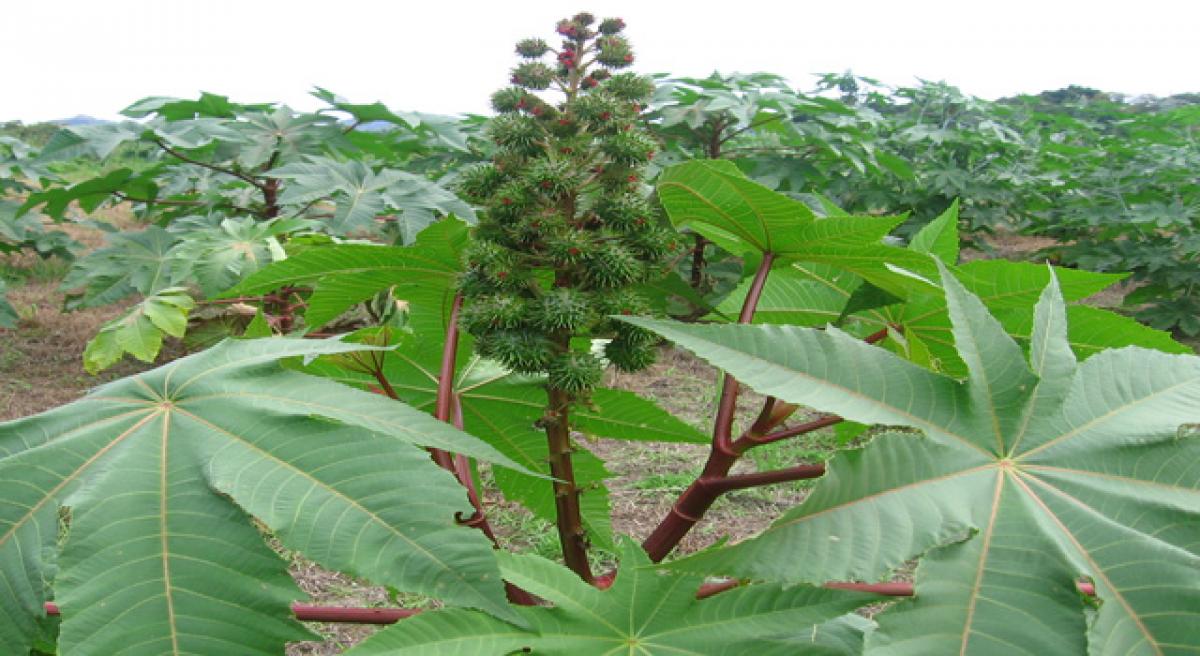Just In

Castor (Ricinus communis, L.) occupies an important place in the country’s vegetable oil economy. During recent years, castor has emerged as a commercial crop with immense export potential earning valuable foreign exchange. It ideally suits dryland farming in kharif and with limited irrigations in post-monsoon both in traditional and non-traditional areas.
Castor (Ricinus communis, L.) occupies an important place in the country’s vegetable oil economy. During recent years, castor has emerged as a commercial crop with immense export potential earning valuable foreign exchange. It ideally suits dryland farming in kharif and with limited irrigations in post-monsoon both in traditional and non-traditional areas.
Castor is produced under two contrasting environments in the country viz., irrigated intensive cultivation with high productivity in Gujarat and Rajasthan; and rainfed culture coupled with poor management with very low productivity in Andhra Pradesh, Karnataka, Tamil Nadu, Orissa, etc.,
The poor agro-ecological resources in traditional castor growing tracts of south India is characterized by cultivation in sub-marginal and marginal lands by the resource poor farmers, uncertainty of rainfall, delayed sowings, poor management of crop with little or no inputs and use of poor quality seed.
Aberrant situations
1. Normal onset of monsoon (June)
• In traditional areas of Andhra Pradesh, Gujarat, Karnataka and Tamil Nadu, castor can be sown from 15 June to 15 July.
• The viable and remunerative castor based intercropping systems like castor + groundnut (1:5), castor + cluster bean/ mungbean/ cowpea (1:2), castor + pigeon pea (1:1), castor + chillies (1:8) can be followed.
• Select recommended varieties like DCS-107, Jyoti, 48-1, Kranti, GC-3, and hybrids like DCH- 177, DCH-519, YRCH-1, GCH-4, GCH-5, GCH-6, GCH-7 and RCH-1 suitable for different regions.
• Adopt recommended spacing of 90 x 60cm (Andhra Pradesh, Karnataka and Tamil Nadu) and 120 x 60 cm (Saurashtra) by maintaining single plant. Alternately follow 90x90 cm square planting for two way intercultivation resulting in better weed control and moisture conservation.
• Opening furrows between rows at 40 DAS conserves soil moisture and enhances yield.
• The recommended dose of fertilizer (60-40-30 kg N:P2O5:K2O/ha for Andhra Pradesh and 100- 50-0 kg N:P2O5:K2O/ha Gujarat) may be followed. Nitrogen should be applied in 3 splits.
• Follow need- based plant protection measures to control major pests (Red hairy caterpillar, semi looper, capsule borer) and diseases (wilt, root rot, Botrytis).
• Rear eri silkworm by feeding excess castor leaves from October onwards to obtain additional income.
2. Late onset of monsoon (After 15 July)
• Seed soaking in water for 24 hours before sowing to speed up germination and better stand 1 establishment.
• Go for sole crop of castor.
• Increase plant density through reduced spacing (60 x 45 cm).
• Select early or medium duration castor varieties and hybrids recommended for the respective states
• Create dust mulch by blade harrowing immediately after each rain to remove weeds and prevent moisture loss and helps in moisture conservation.
• At flowering/development of primary raceme, apply 20 kg N/ha immediately after rain to exploit secondary and higher order spikes and compensate loss from primary order spikes.
• Relay cropping castor with horsegram (1:6) can be followed.
• Rear eri silkworm by feeding excess castor leaves from October onwards to obtain additional income.
3. Very late or delayed onset of monsoon (August)
• Soak the seed in water for 24 hours to speed up germination.
• Castor can be sown as sole crop. Intercropping should be avoided.
• Adopt early or medium duration varieties and hybrids recommended for different states.
• Increase plant density by reduced spacing (60 x 45 cm or 60 x 30cm).
• Frequent intercultures with blade harrow conserves soil moisture, apart from reducing weed competition.
• Provide supplemental irrigations at critical stages of primary spike development and secondary spike initiation (50-75 DAS) through farm pond or other sources.
4. Castor as post-monsoon crop (September - October)
• Under tail end regions of irrigation commands or low water yield in wells for rice cultivation, castor can be profitably taken in rabi season with limited irrigation facility.
• Sow high yielding hybrids like DCH-177, DCH-519, YRCH-1, GCH-4, GCH-5, GCH-6, GCH-7 and RCH-1

© 2024 Hyderabad Media House Limited/The Hans India. All rights reserved. Powered by hocalwire.com







